15 Must-Try Foods & Drinks While Studying Abroad in South Korea
If you have plans to study abroad in South Korea, you're in for a treat -- literally. Check out these 15 must-try Korean foods and drinks and get acquainted with all the tasty things that await you.
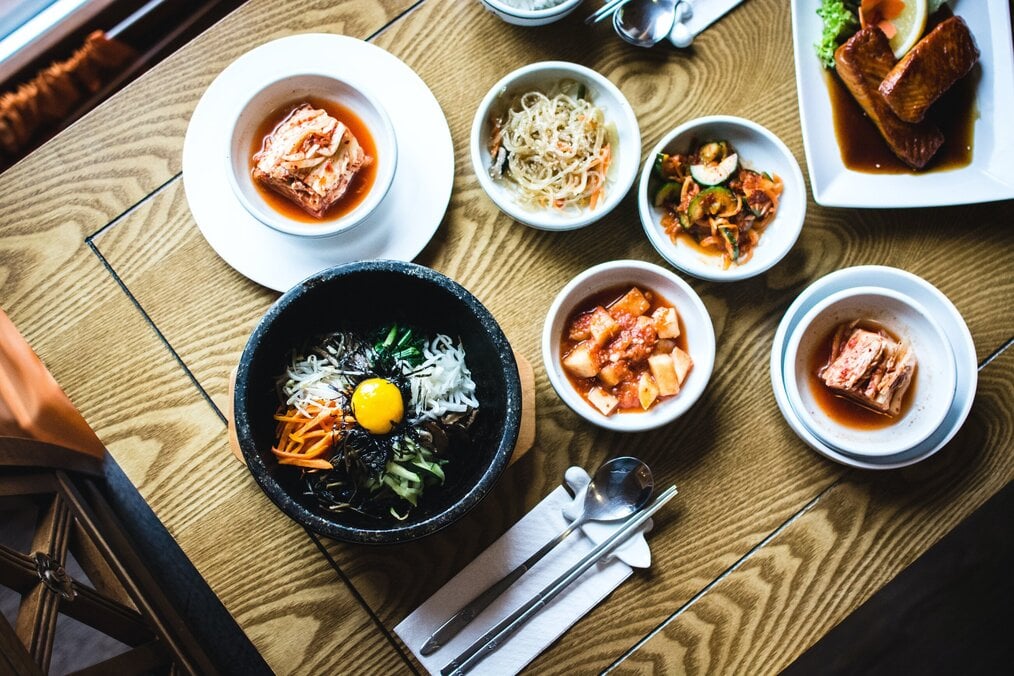
Studying abroad is all about new and exciting experiences. If you're like me, digging into your host country's cuisine is among the top things you can do while spending time overseas. For those who study abroad in South Korea, a veritable smorgasbord of delicious foods and drinks awaits you.
Heeyoung Jang, owner of Busan Cooking Class is a chef, entrepreneur, and food lover based in the southern port city of Busan. She's passionate about teaching others about Korean food and was happy to share her expertise with prospective study abroad students.
What makes Korean food unique?
When asked what makes Korean food unique, Heeyoung replied that fermented foods are the heart and the core of their cuisine. Fermentation is a chemical process where molecules like sugar and yeast are broken down. If you've ever had yogurt, kefir, kombucha, or saeurkraut, you've had something fermented!
In Korean cuisine, kimchi is front and center as the most famous and most loved fermented food. Additionally, fermented sauces are often added to dishes to add depth of flavor. "Jang is a basic Korean sauce used for making a lot of different foods," Heeyoung says. It comes in several forms like gochujang (fermented red pepper paste) and doenjang (fermented soybean paste).
And the best part is, fermented foods are filled with probiotics that have been linked to a number of health benefits. Not only is Korean food delicious, but it's also good for you, too!
Where are the best food scenes in South Korea?
Seoul
The capital of South Korea, Seoul is like a lot of international cities: you can really experience food diversity here, not just as it relates to Korean food but to the world. Seoul features a large number of MICHELIN-starred restaurants as well as large food markets. According to Heeyoung, traditional Seoul food is closely related to the cuisine found in North Korea.
Jeonju
Located in North Jeolla Province, this city is where the ever-popular bibimbap was born. In fact, Jeonju has been dubbed "Taste City" and is a UNESCO City of Gastronomy. Jeonju has taken great strides to protect traditional food culture and local farmers and fishermen grow and catch a wide variety of fresh ingredients.
Busan
Busan, home to the largest fish market in Korea, has a special place in Heeyoung's heart. "Busan is my hometown and I’ve sort of naturally returned to my roots. I moved to Seoul for university and also lived, worked, and traveled abroad. That made me realize how unique the culture of food here is and what our local community has cultivated."
Being a port city, Busan has been shaped by international visitors coming and going from its waters. The influence of South Korea's neighbor Japan can be observed in the food culture, something that's celebrated. "In Busan, we’re used to adopting new things and we’re bold - you can actually see that on the plate," Heeyoung says.
Top foods and drinks in South Korea
As a student studying in South Korea, you'll have plenty of time after class and on the weekends to explore. What better way to get to know a culture than through its food? Sharing meals with new friends is a great way to bond and create memories. Even if you're not the most adventurous eater, try to step outside of your comfort zone and sample some of the dishes featured below. You may just find your new favorite food!
Kimchi (김치)
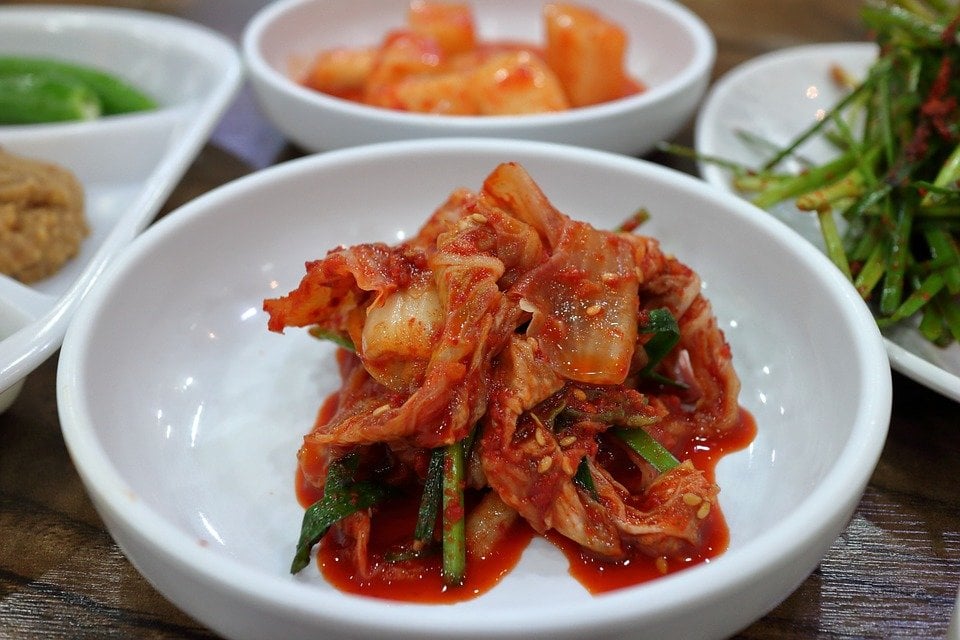
"Kimchi is the most popular and most famous Korean food of all. We really cannot have a meal without kimchi. Even if we have dozens of side dishes on the table if we don’t have kimchi we feel something is missing," says Heeyoung.
Crunchy, spicy, sour, and salty -- you can see why kimchi has the spotlight in Korean cuisine. Kimchi is typically made of Napa cabbage that is rubbed down with various spices and sauces and fermented to perfection. Other vegetables can be made into kimchi as well, although cabbage kimchi is the most common.
Kimchi can be eaten as a side dish or added to main dishes like kimchi-jjigae, a kimchi stew.
Gogigui (고기구이)
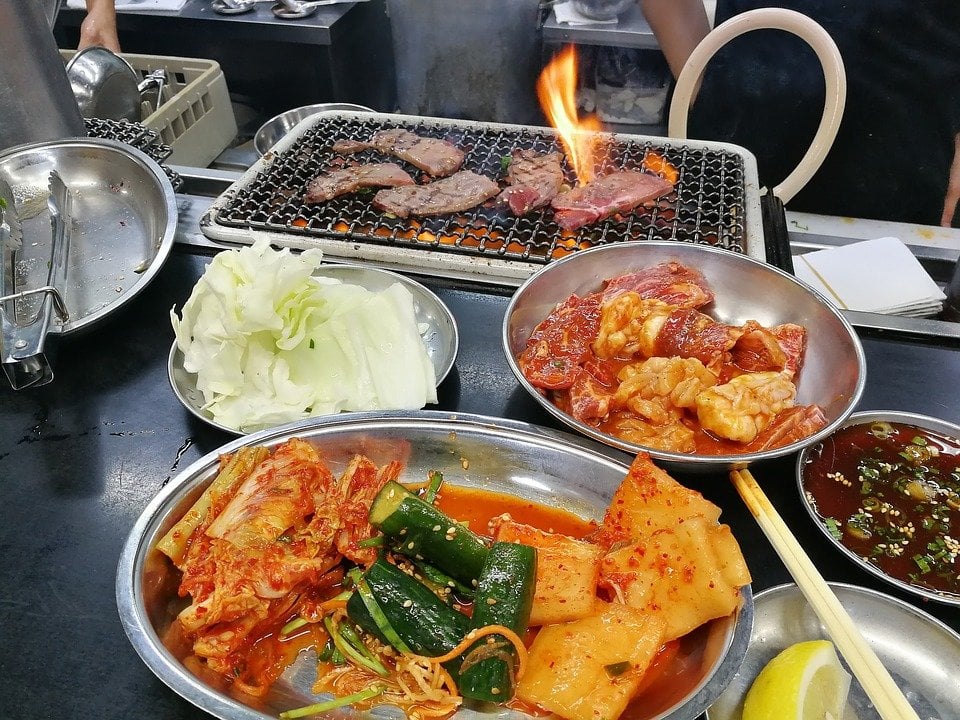
Gogigui is a blanket term for Korean barbeque, with gogi meaning meat and gui meaning grilled. Eating gogigui is an immersive and social dining experience, with meats grilled directly at the table. The meat is accompanied by a large variety of sides (including kimchi, of course!). Two popular varieties of gogigui are:
- Galbi: also called galbi-gui, galbi is grilled beef or pork short ribs.
- Bulgogi: literally translated as "fire meat", bulgogi is marinated grilled beef or pork. Cuts of meat used include rib-eye, sirloin, and brisket.
Gimbap (김밥)
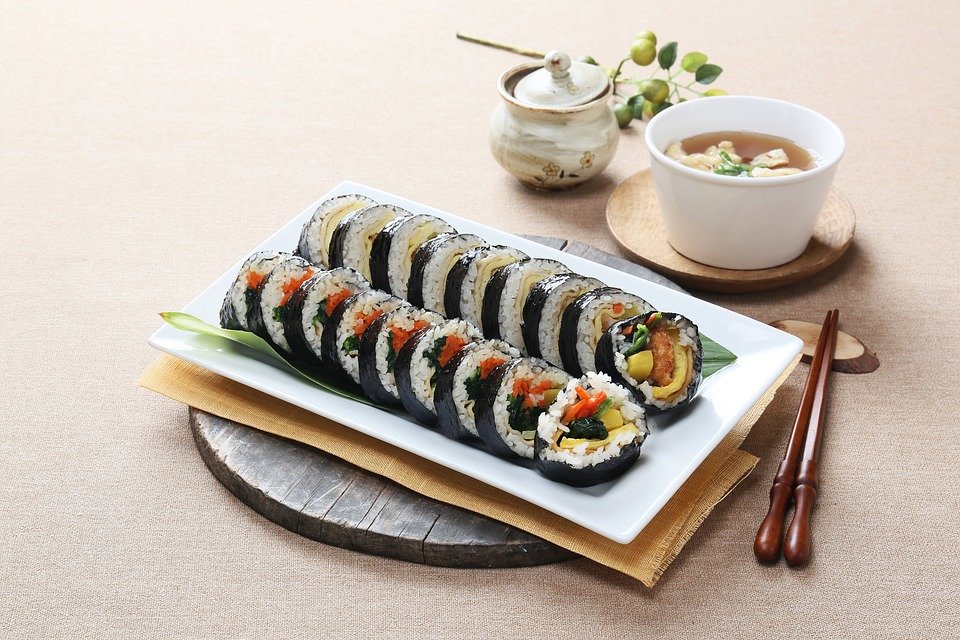
Whereas Japanese sushi contains raw fish, the meat and fish in Korean gimbap is cooked. Gimbap can be filled with a variety of vegetables, strips of egg, and cooked meat like bulgogi. Gimbap is a great meal during a day of classes, as it’s easy to find, delicious, and filling.
If you're studying in Seoul, check out the mayak-gimbap at the Gwangjang Market where it's a specialty. The name translates to "drug gimbap" because although it's a relatively simple roll, it's so good that it's addictive!
Naengmyeon (냉면)
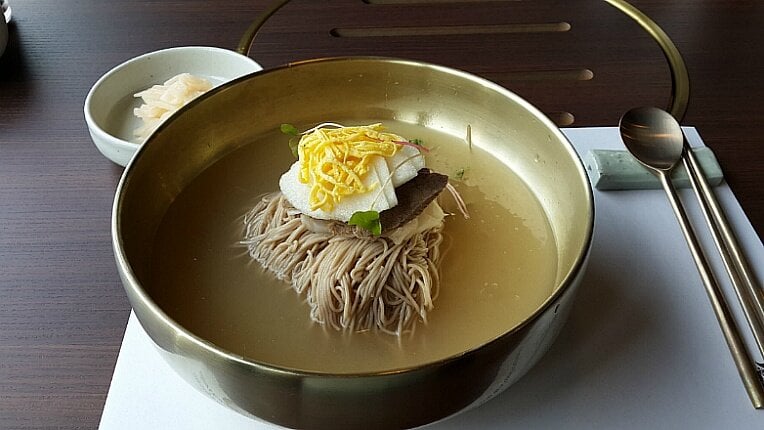
Translated directly as “cold noodles,” this soup is perfect after a long day spent in a hot classroom. Made of chewy buckwheat noodles, naengmyeon is served cold with different broths and ingredients. The two main varieties of this soup are mul-naengmyeon (noodles are served in a clear beef broth) and bibim-naengmyeon (noodles are mixed in a spicy sauce called gochujang).
Samgye-tang (삼계탕)
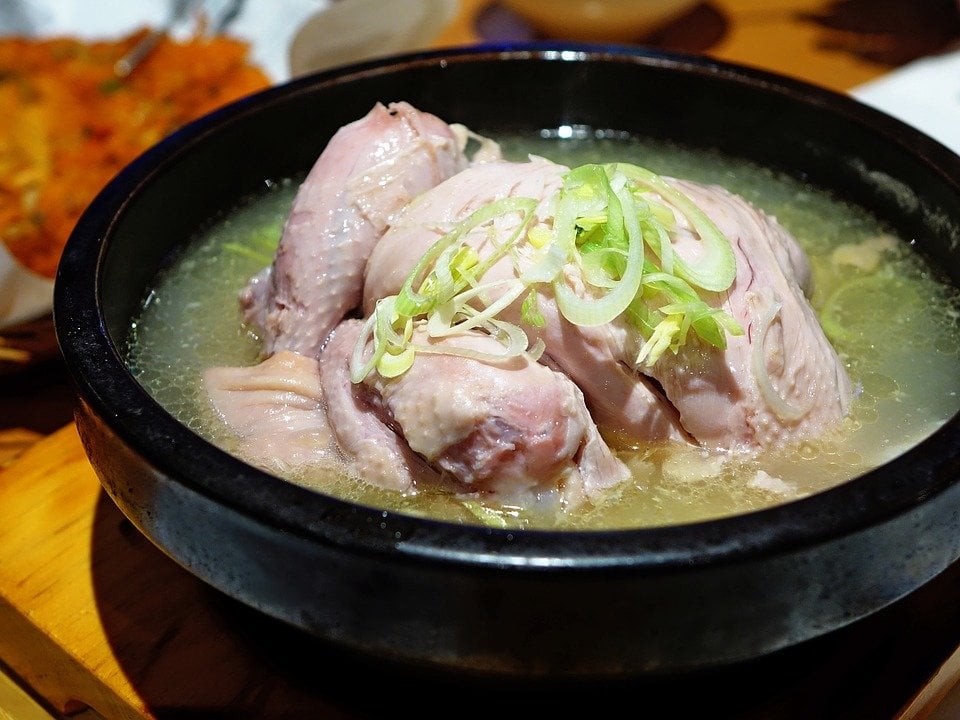
As we've seen, soups are popular dishes in South Korea. Here's another one to sink your teeth into!
Samgye-tang is made with a whole young chicken that's stuffed with garlic, sticky rice, and ginseng and cooked in a broth. Koreans have a saying that translates to "fight fire with fire" so samgye-tang is eaten on even the hottest days of the year.
Kong-guksu (콩국수)
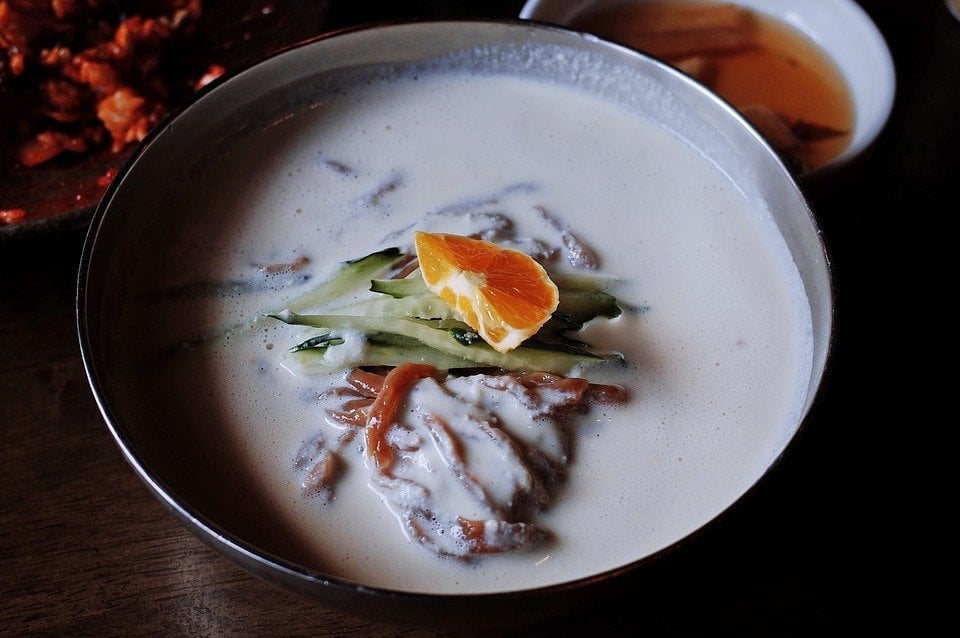
Here's a cold variety of soup to enjoy if you're not sure you can take the heat of samgye-tang. This soy milk noodle soup is great on a hot summer day because it’s served with ice cubes. Topped with cucumber slices and sesame seeds, it’s also a unique and beautiful dish, and perfect to help you cool off after trekking around campus in the sun.
Nakji-bokkeum (낙지볶음)
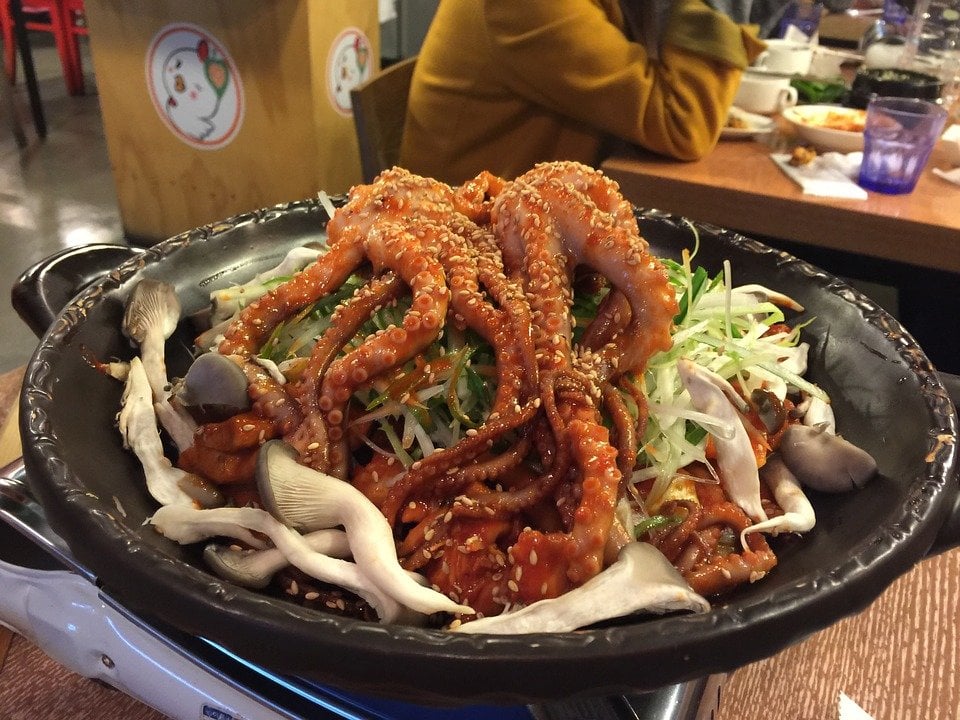
Spicy stir-fried octopus is the heart of nakji-bokkeum. This dish consists of a chopped octopus that's stir-fried with vegetables (cabbage, carrots, and onion) in red chili sauce and served on rice or thin wheat flour noodles. It may be topped with radish sprouts, soybean sprouts, or sesame seeds.
San-nakji is the raw variety that's so fresh when it's served that the tentacles are still wriggling on the plate.
Yeongeun jorim (연근 조림)

Yeongeun jorim, braised lotus root, is a little chewy and a little crunchy while also being sweet and salty. It's first boiled in water with some vinegar to soften it, remove starch, and reduce its natural bitterness. Then, it's braised in soy sauce. With a taste somewhere between a potato and a radish, it makes for a satisfying side dish.
Dolsot Bibimbap (돌솥 비빔밥)
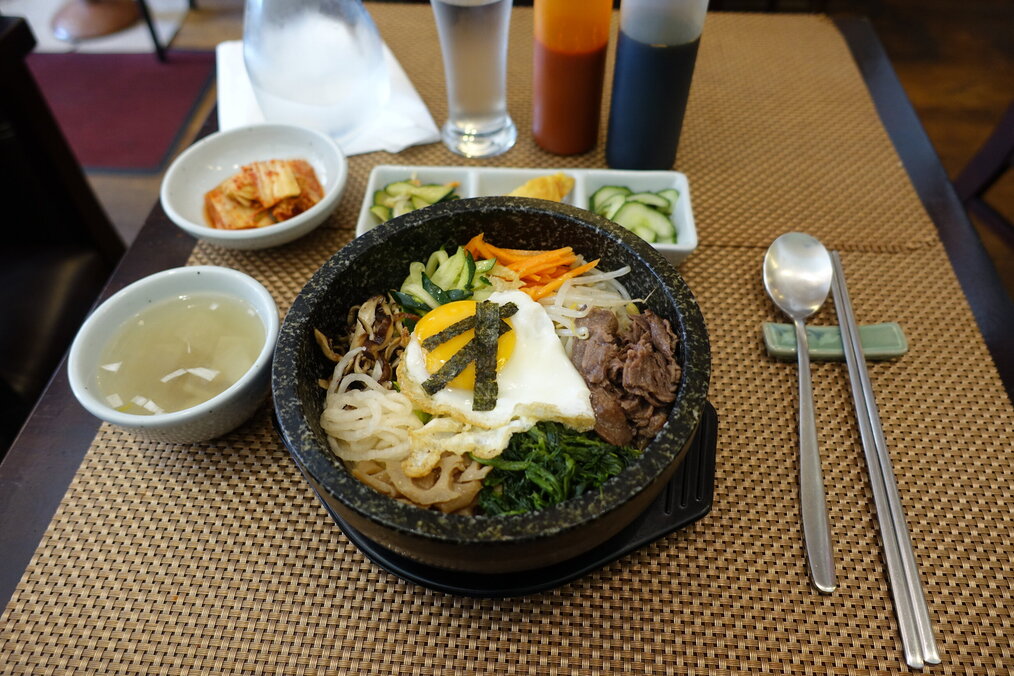
Dolsot bibimbap differs from bibimbap in its presentation. A dolsot is a stone bowl and the bibimbap is served in one that's sizzling hot. This crisps up the rice on the bottom and adds texture and flavor that's not found in the bibimbap served in a metal bowl.
Typical ingredients can include beef, carrots, cucumber, zucchini, spinach, and mushrooms. It's topped with a gochujang-based spicy sauce.
Mandu (만두)
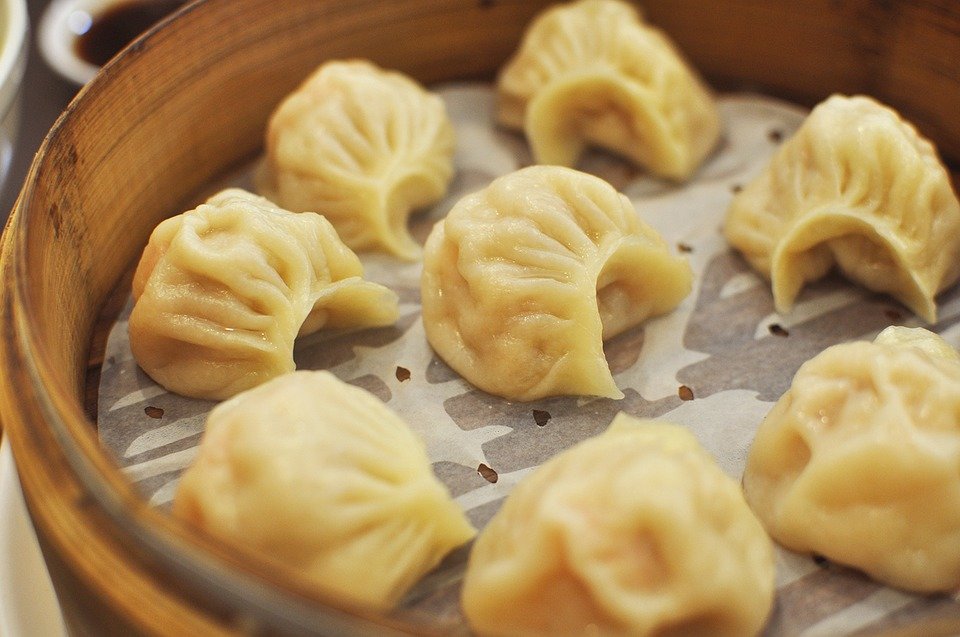
Who doesn't love a good dumpling? Korean mandu can be steamed, pan-fried, boiled, or deep-fried. They are often stuffed with pork, tofu, beef, kimchi, mushrooms, cabbage, or chives. The dipping sauce can consist of a mix of soy sauce and vinegar with a little added gochujang for some heat.
Bungeo-ppang (붕어빵)
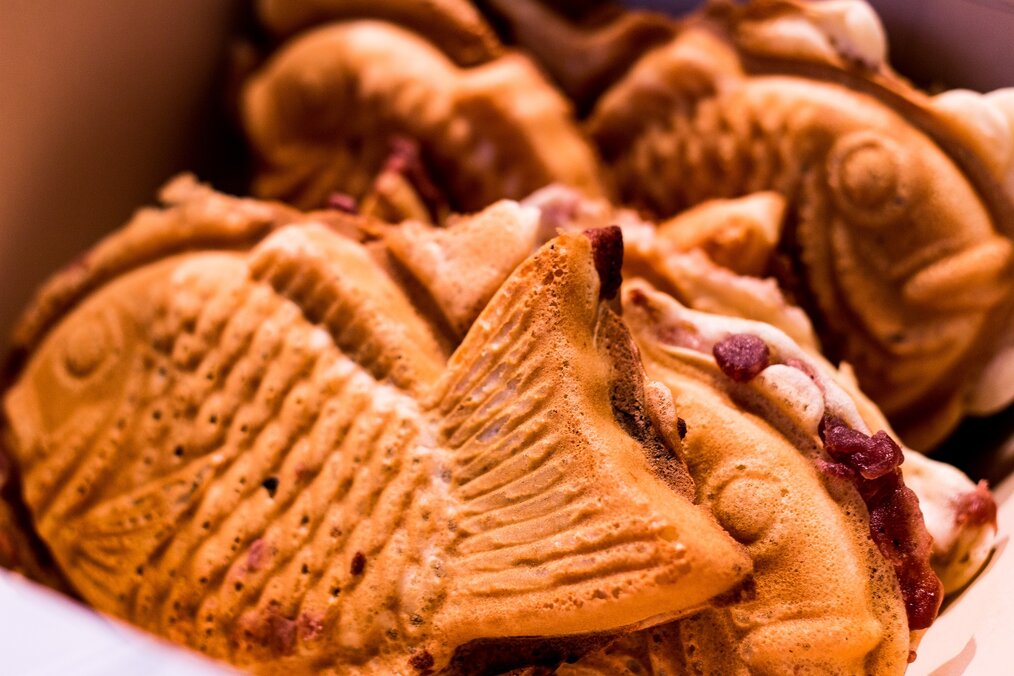
This adorable and popular street food is shaped like a carp and is stuffed with sweet red bean paste. Bungeo-ppang is Korea's version of Japan's taiyaki which was introduced to the country in the 1930s when South Korea was under Japanese occupation. Over the years, Koreans tweaked the recipe to make it their own and now it can be found in outdoor winter market stalls across the country.
Bingsu (빙수)
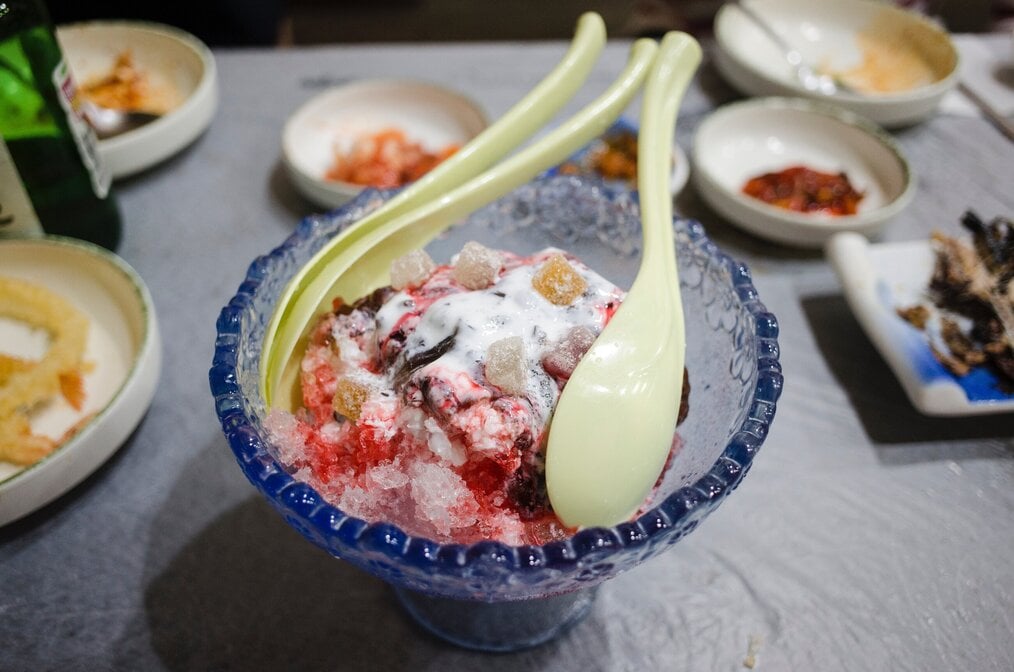
Bingsu is a popular dessert made of shaved ice covered in sweet toppings like chopped fruit, condensed milk, and fruit syrup. The most popular variety is patbingsu which is topped with sweet red beans. The earliest forms of this dessert have been documented as far back as the Joseon Dynasty beginning in 1392.
Sikhye
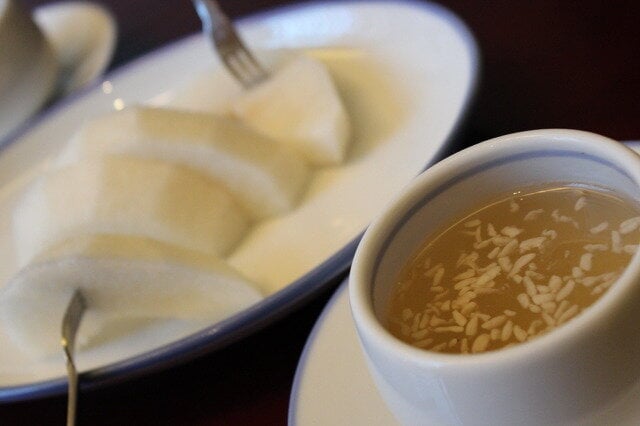
Sikhye is a sweetened rice drink that is often served as a dessert. Aside from the rice water, it can be garnished with grains of rice and pine nuts. It's believed to aid digestion, making it a great way to end a big meal.
Banana uyu (바나나 우유)
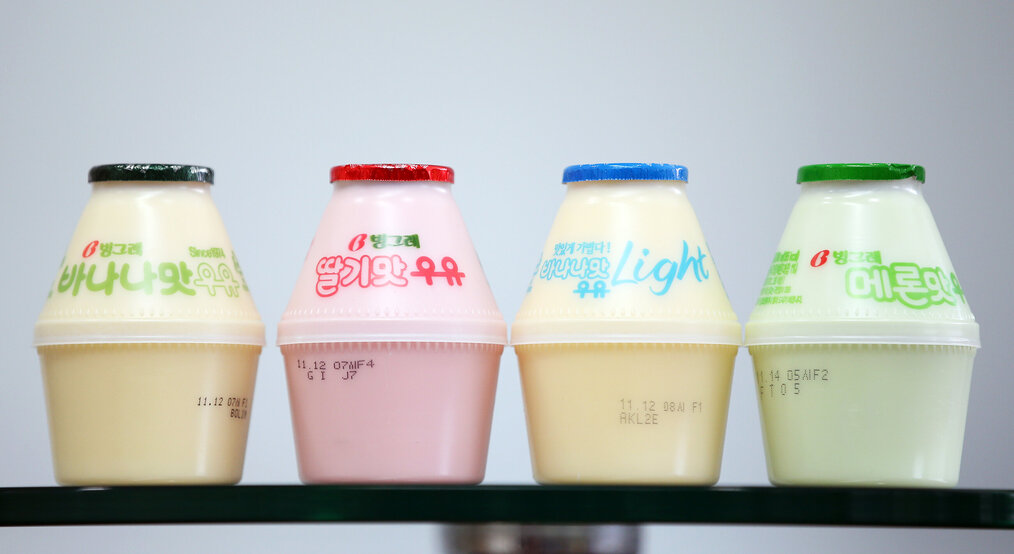
First produced by the Binggrae company in 1974, banana milk, or banana uyu, has been a top seller ever since. Banana milk is mostly milk mixed with water, banana juice concentrate, sugar, and other artificial flavors including vanilla.
As if banana milk wasn't popular enough already, it's a personal favorite of K-pop superstar Jungkook from the group BTS.
Soju (소주)
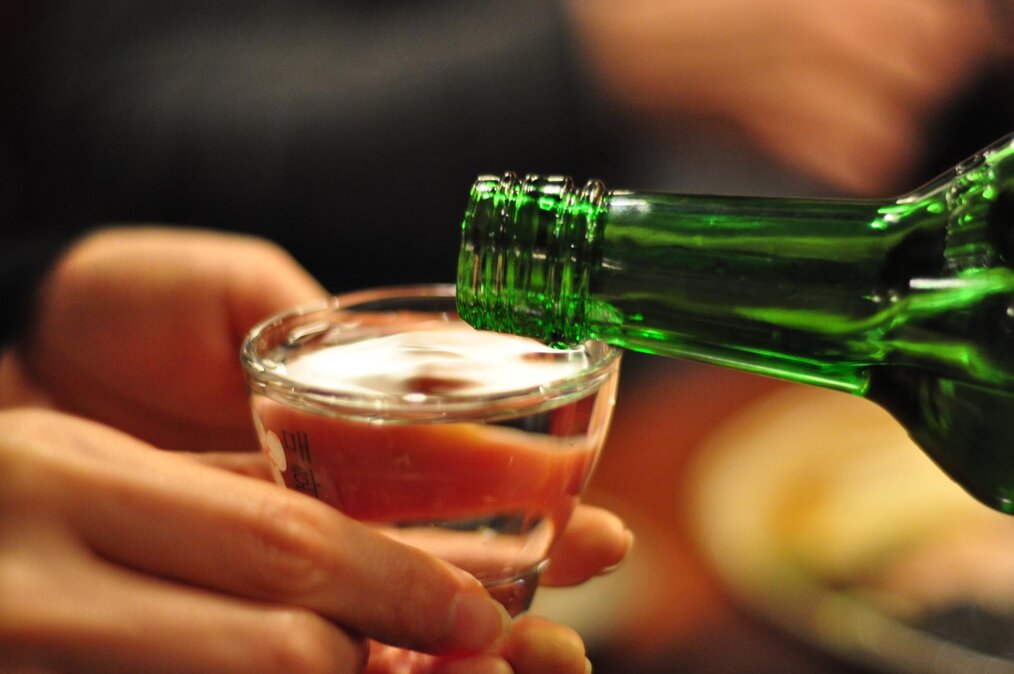
Whether you're a partier or not, soju is a staple both on a night out as well as around the dinner table. Traditionally made with various grains, modern soju is usually produced using other starches like potatoes or sweet potatoes. It is typically enjoyed straight from the bottle, although there are some cocktails that feature the spirit.
In Korean drinking culture, age and status are observed -- the youngest pours the drinks for the older members of the table, and those lowest-ranked within a company pour according to the office hierarchy. You should always pour with both hands; the right hand pours while the left hand supports the right arm.
Dig into Korean cuisine
As a study abroad student in Korea, you're encouraged to immerse yourself in and embrace the culture, language, and people of your new home. The food is no different!
When asked what advice Heeyoung would give first-time travelers to Korea who want to experience the food scene, she thinks you should not hesitate to give it a go. "Especially if you call yourself a foodie, Korea is a really fun place to explore. Dig in and try everything that locals do. I think you’ll love it!"
